Rainy Autumnal Daze
Last time I visited my sit spot I complained about how dry the soil was. Here in Ohio, October is one of our wettest months. Well, this week I ate my words. The days prior to entering my sit spot it rained off and on and the morning I decided to venture out was no different.
Monday, Oct. 19th, 2020 at 10:50 a.m. it was raining and about 13 degrees celsius. Like many other organisms before me, I had to adapt. Instead of taking a paper journal with me I recorded an audio journal on my phone from the semi-dry environment of my pocket. The rain is heavy but there is no wind nor thunder. The world is somewhat muffled by my hat and hood and little can be heard under the sound of rain and the swelling creek. My spot lacks the usual sounds of insects and birds. While I struggle to see and hear, I revel in the smell of a nice rain. It’s not like summer rain when the formerly dry soil releases petrichor. It smells spiced in a way. Not cinnamon, more like nutmeg or allspice. It’s possible that the smell is really coming from one of the houses but I can’t locate the source.
The recent wind and rainstorms have knocked most of the leaves off of the trees. Gone is the thick canopy that protected the secrets of the animals that found homes there. From my spot I can now count five nests left vulnerable to peering eyes. Have I heard any bird calls? I don’t think I have.
The few trees that do hold their leaves still seem to be Maples. We don’t have the proper Maple trees for sugaring where I live. It would take far too long to produce even the smallest amounts of maple syrup. If you drive four hours north, you might have better luck with the trees there when only a lake away from snowy Canada.
Not that it isn’t cold here. It has gotten down to freezing and below a handful of nights already. I think all the moisture is speeding up the breakdown of leaves and my walnuts. I’ve noted that they happen to be mostly free of their outer layer and the woody insides are exposed. They are getting buried, too, under hundreds of leaves. The tree stump at the North edge is covered in green moss and has become softened by the rain. Wind has caused leaves to get lodged in the jagged edges left behind by the men who cut the tree down. I am happy to report that my Canadian Goldenrod is still lively. It is not as yellow as it used to be but compared to the other plants that surround it it’s very green.
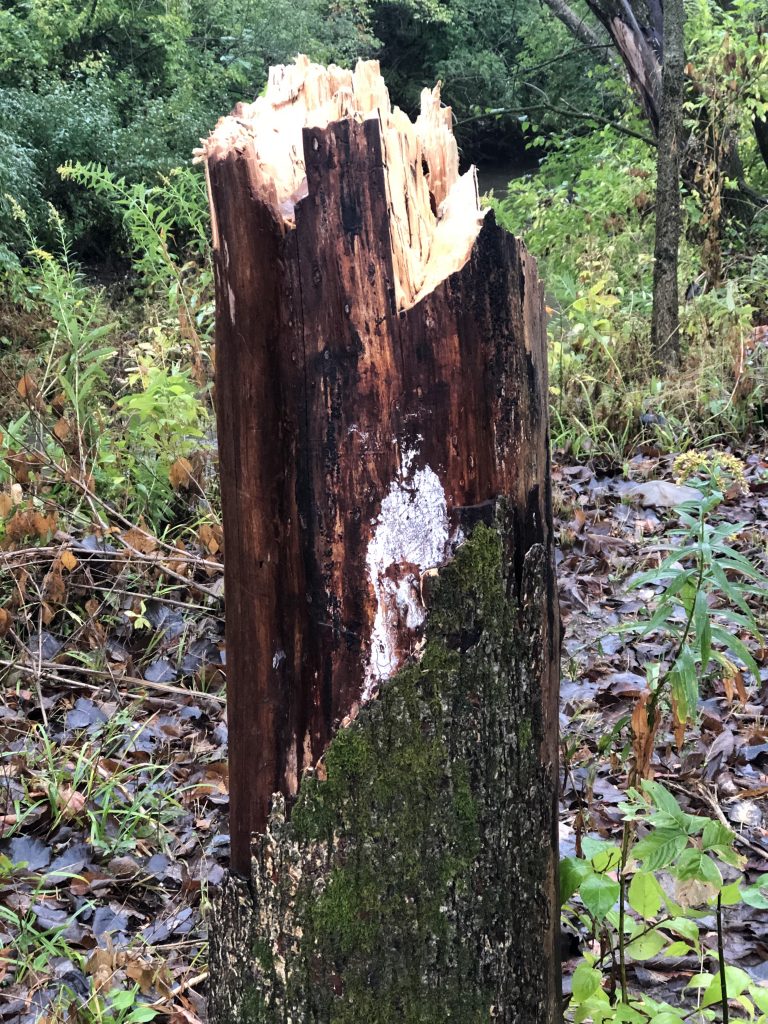

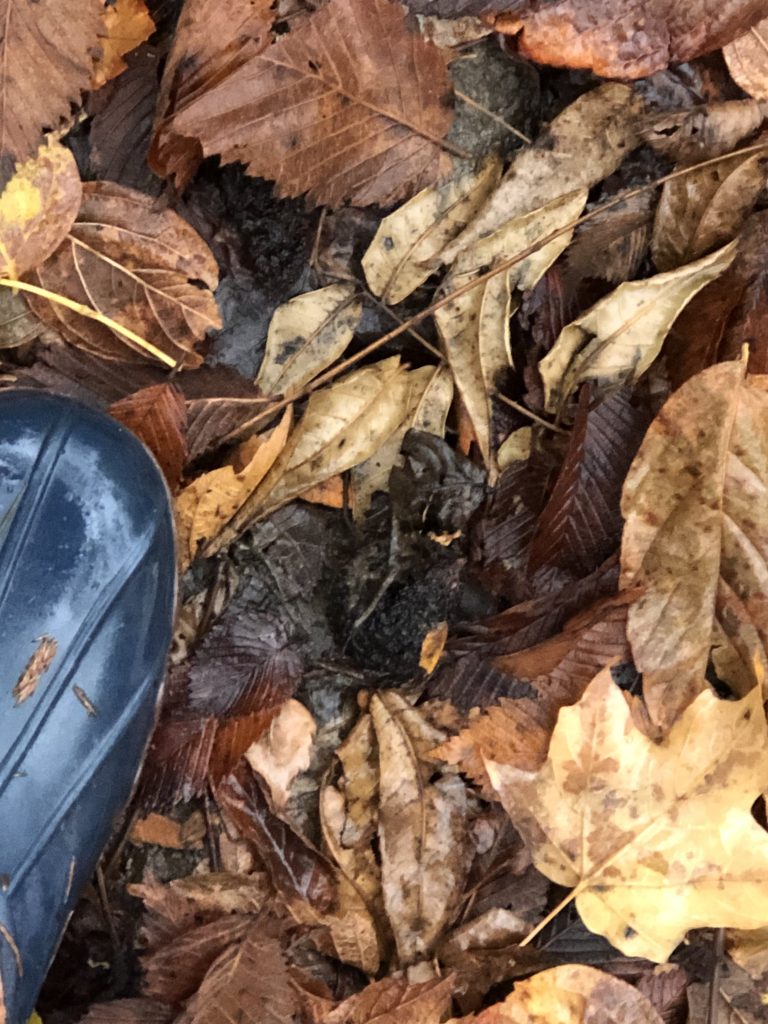
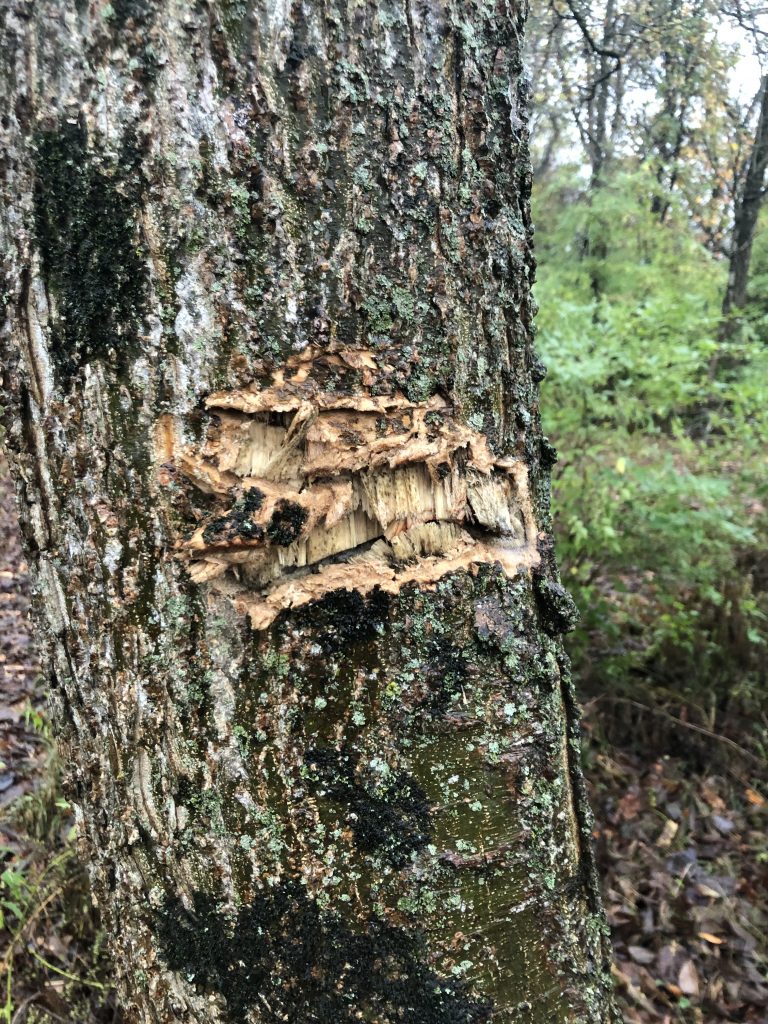
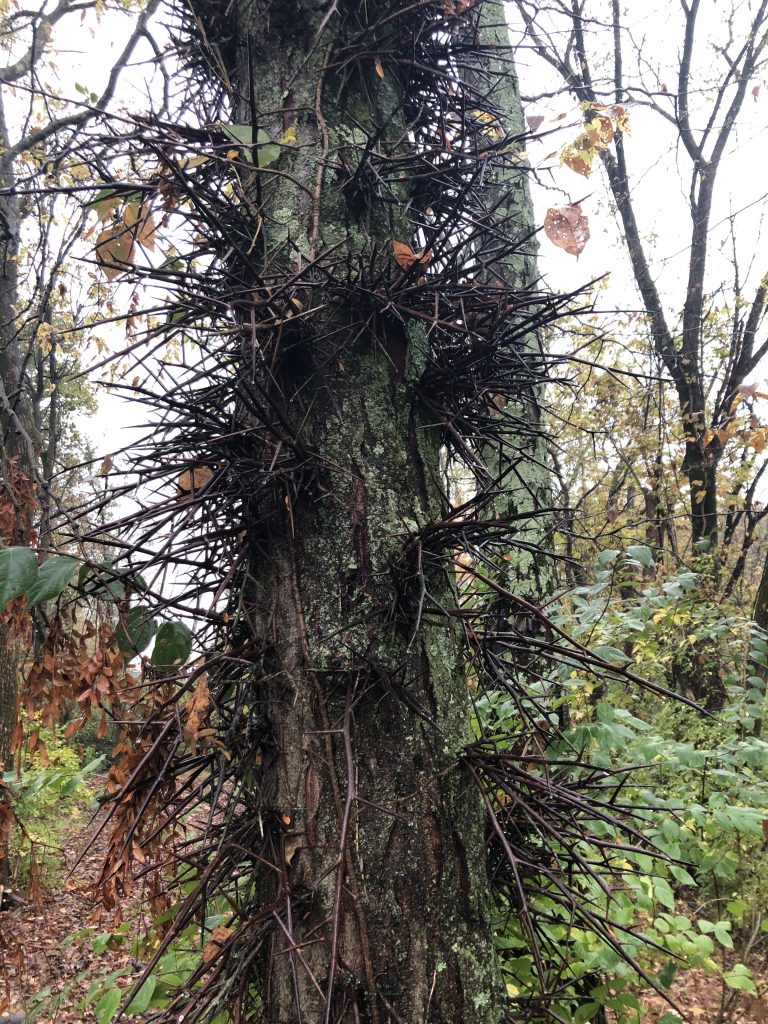
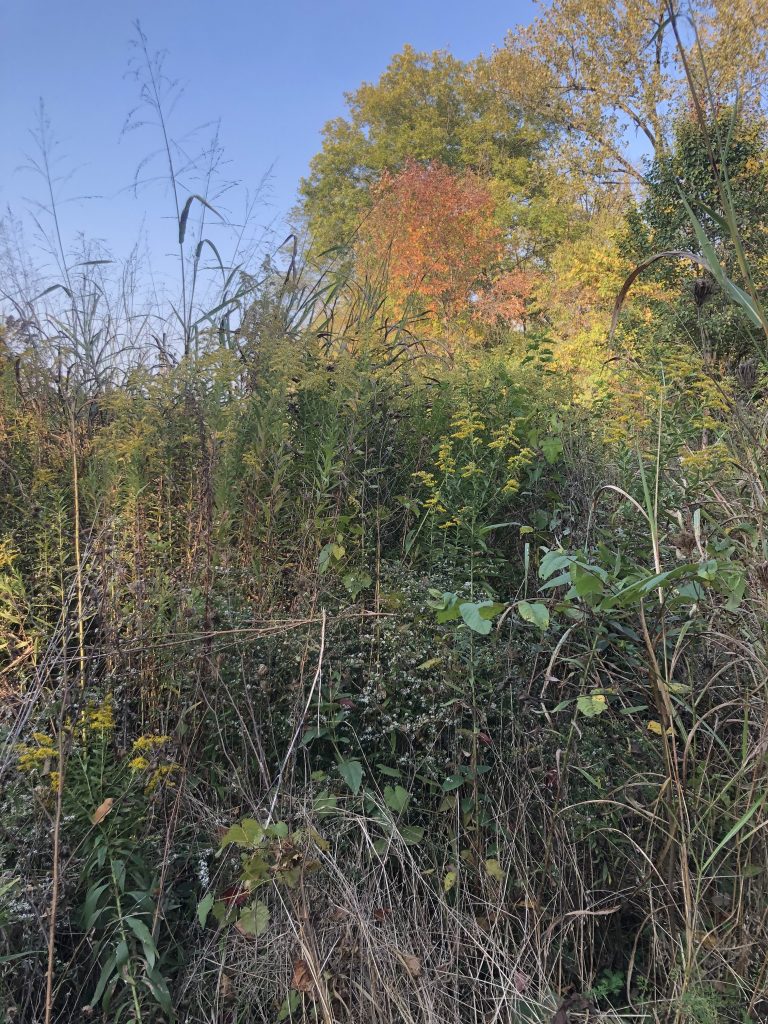
Auditory Exercise
When the rain picks up even more I decide to huddle against a tree and follow through with the auditory exercise. It’s only then that I hear bird calls. The first is a more high pitched, quick trill that seems to come from the West. The second is lower in pitch and follows a two-beat caw-caw pattern where the first caw is more drawn out than the second. So, more of a caaaaw-caw. This one comes from the Northeast where there are about three visible nests. Upon opening my eyes, I did see that the birds in the Northeast were about nine inches long beak to tail feather. They were dark in coloring and I could not make out any distinguishing features through the rain and from such a distance.
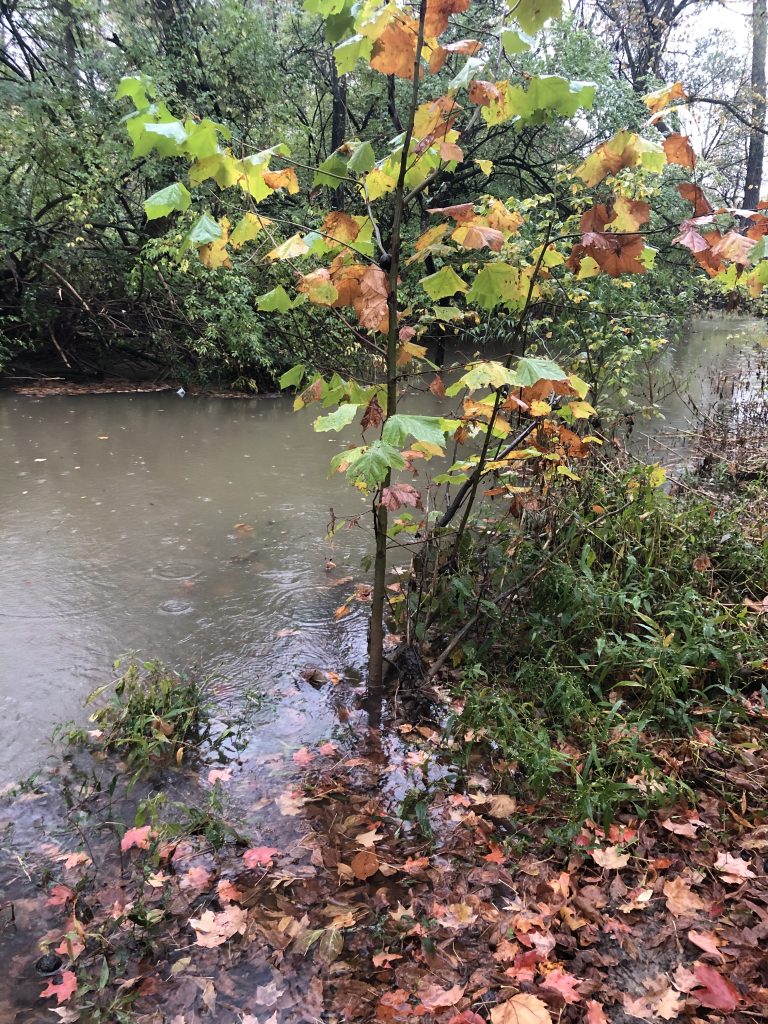
Observation Exercise
With all the rain, I knew the creek was undergoing some changes. This is what I chose to observe for ten minutes. The creek had risen about two feet. The Oriental Lady’s Thumb and the base of a Maple close to where the bank was had been submerged. My boots sunk into the mud that was very black and had laid siege to several walnuts. Leaves and branches were being knocked down by the rain and into the creek where it was carried south by a quicker than normal current. I am sad to say that I saw quite a bit of refuse in the creek being washed downstream, as well. Things such as beer cans, plastics, labels, and paper will all eventually flow into the Ohio River and one day the ocean. I didn’t observe any aquatic life during those ten minutes and it had me questioning the health of the creek. Was the fertilizers being used in nearby lawns and gardens making it to the creek? Was something else preventing populations from moving in there? It was something to think about.

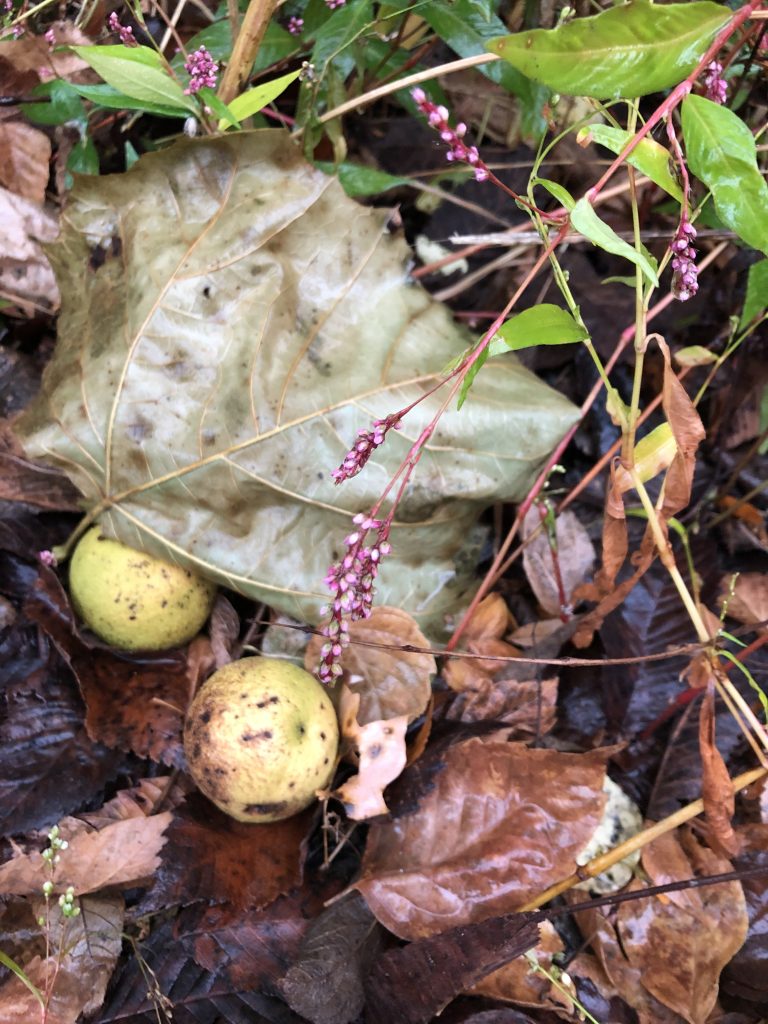
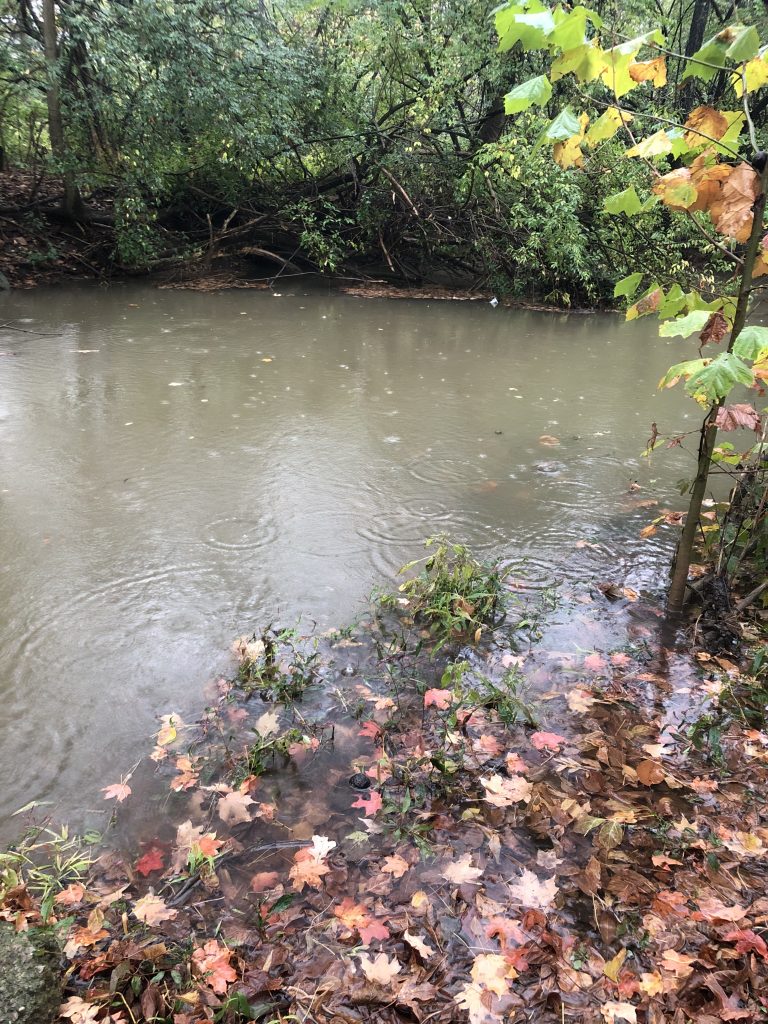
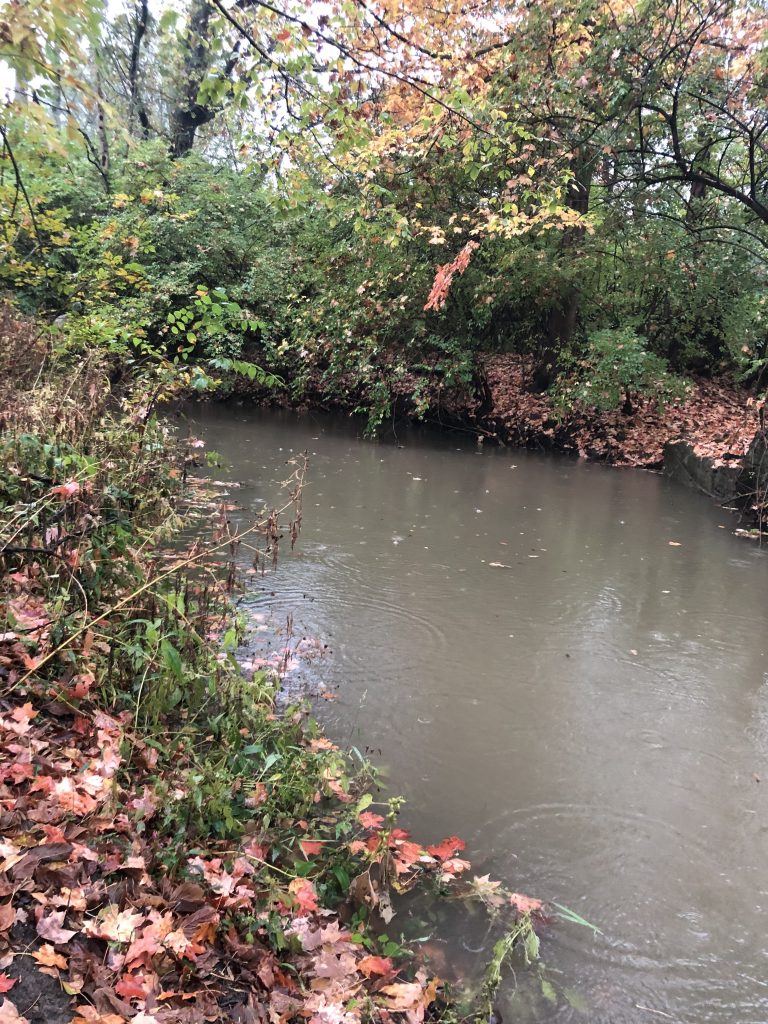
Nature Finds!
To my delight, the rain did not prevent me from finding some interesting creatures to learn about. I managed to find a plant I had not identified yet and two insects. The plant actually turned out to be a tree, the Eastern Cottonwood. This tree blooms in spring with these cotton esque wisps that actually contain millions of seeds. Each tree, in fact, contains roughly 40 Million seeds that blow in the wind. The tree only grows to be 30 meters tall, but judging by the large amounts of them in this area being the shortest kid on the block is no handicap. This is a very easy tree to rear regardless of it being susceptible to wind and ice storms.
My next find was a Red-Legged Grasshopper, a part of the Short Horned Grasshoppers. When you walk around the field grass in the West of my spot they all rush to hide in the grasses, flying and jumping. Grasshoppers experience large population swells that are often referred to as “outbreaks”. During an outbreak, vegetation suffers severe damage. A lot of the plants in my area have leaves that have been eaten away by these large populations.
Lastly I found a caterpillar that has a reputation of predicting the future. The black and brown Banded Wooly Bear caterpillar turns into the Isabella Tiger Moth. Folklore states that the bands on the caterpillar will predict how cold the winter will be. If the tail is black and the middle brown band shorter, then it’s going to be a cold one. However, this is just lore. The story was debunked years ago and the bands most likely correlate to positive growing seasons. Luckily, that’s not this caterpillar’s only trick. When disturbed the Wooly Bear will curl up and play dead.


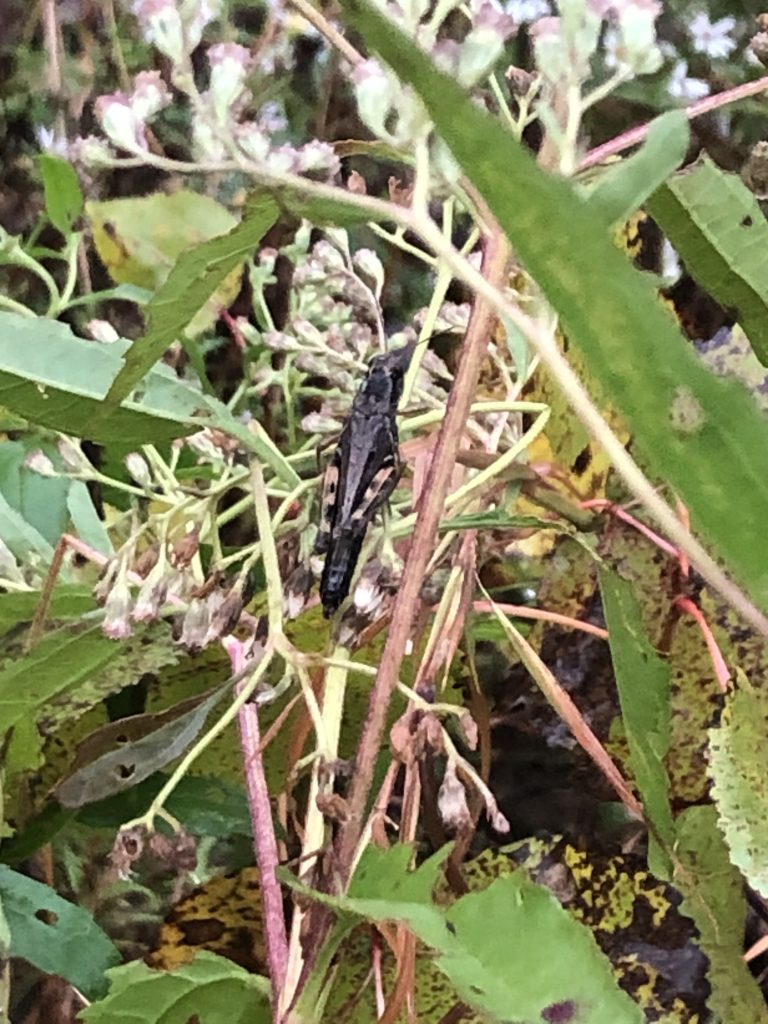
The caterpillar I found did have a black tail. While, I’m only superstitious half of the time. It will be interesting to see how this winter will pan out. It was only a couple years ago that my area suffered with the Polar Vortex and several ice storms. It will be interesting to get a better look at how organisms react in my area when the temperatures start to drop.


Wow, what a great blog! I loved your incorporation of the Emerson quote, it’s so relevant! And your inclusion of videos and photos is masterfully done, good job! I also enjoy the warm scent after a good rain, and your blog was so interesting to read!
THIS IS SPECTACULAR KYRA – what a fantastic blog!